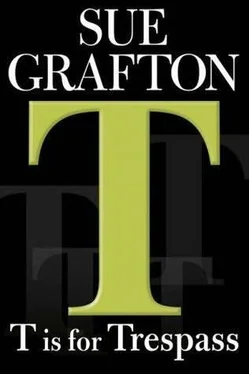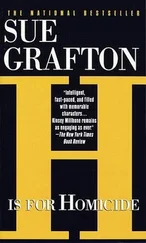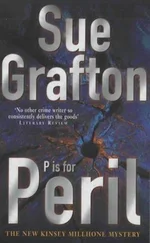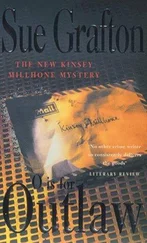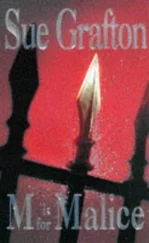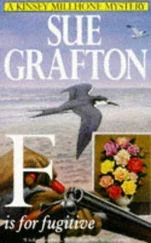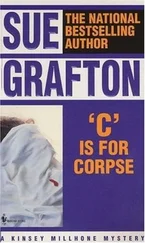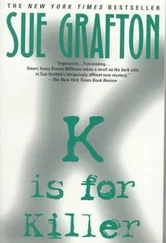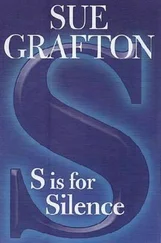In the lobby, the white-flocked artificial Christmas tree had been dismantled and stuffed back in its box until the holidays came around again. On the antique table that served as a reception desk, a white-painted branch had been placed in a Chinese ginger jar and hung with pink and red hearts in honor of Valentine’s Day, coming up in two weeks.
The receptionist directed me to One West, the postsurgery floor. Passing down the hall, I caught sight of Lana in a four-bed ward distributing meds in white pleated paper cups. I waved and pointed, indicating that I’d wait for her at the nurse’s station. I found a molded gray plastic chair in a little visitors alcove and picked up a tattered magazine called Modern Maturity.
Lana appeared moments later, rubber-soled shoes squeaking on the vinyl tile. “I’ve already had my break so I don’t have long.” She sat down in a matching plastic chair next to mine. “So how’s Solana doing with the job?”
“Not well,” I said. I’d been debating how candid to be, but I couldn’t see an advantage in holding back. I wanted answers and there was no point in beating around the bush. “I’d like you to look at some photographs and tell me who this is.”
“Like a lineup?”
“Not quite.” I took the bright yellow envelope of photographs from my shoulder bag and passed them over to her. Out of the roll of thirty-six pictures, I’d netted ten clear shots, which she sorted through rapidly before she handed them back. “That’s a nurse’s aide named Costanza Tasinato. She worked here the same time as Solana.”
“Did you ever hear her use the name Cristina?”
“She didn’t use it, but I know it was her first name because I saw it on her driver’s license. Costanza was her middle name and she went by that. What’s this about?”
“She’s been passing herself off as Solana Rojas for the past three months.”
Lana made a face. “That’s illegal, isn’t it?”
“You can call yourself anything you like as long as there’s no intent to defraud. In this case, she’s claiming she’s an LVN. She’s moved herself into the patient’s house, along with her son, who I gather is a lunatic. I’m trying to put a stop to her before she does any more harm. You’re sure this is Costanza and not Solana?”
“Take a look at the wall near the nurse’s station. You can judge for yourself.”
I followed her into the corridor where photographs had been framed and hung, showing the Employee of the Month for the past two years. I found myself staring at a color photograph of the real Solana Rojas, who was both older and heavier than the one I knew. No one acquainted with the real Solana would be fooled by the impersonation, but I had to give Ms. Tasinato credit for the subterfuge. “You think they’d let me borrow this?”
“No, but the woman in the office will make you a copy if you ask nice.”
I left Sunrise House and drove to Colgate, parking as I had before across from the apartment complex on Franklin Avenue. When I knocked at Apartment 1, Princess came to the door, holding a finger to her lips. “Norman’s napping,” she whispered. “Let me get the key and I can take you down.”
“Down” turned out to be a basement, a rare phenomenon in California, where so many buildings are constructed on slab. This one was dank, a sprawling warren of cinder block rooms, some subdivided into padlocked wire enclosures the tenants used for storage. Lighting consisted of a series of bare bulbs that hung from a low ceiling overrun with furnace ducts, plumbing, and electrical pipes. It was the kind of place that made you hope earthquake predictions were off the mark instead of imminent. If the building collapsed I’d never find my way out, assuming I was still alive.
Princess showed me into a narrow room entirely lined with shelves. I could almost identify by type the managers who had come and gone in the thirty years the building had been occupied. One was a neatnik, who’d filed all the paperwork in matching banker’s boxes. The next guy took a haphazard approach, using a strange mix of liquor cartons, Kotex boxes, and old wooden milk crates. Another had apparently purchased his boxes from a U-Haul company and each was neatly stenciled with the contents in the upper left-hand corner. In the past ten years, I counted six managers altogether. Norman and Princess surprised me by favoring opaque plastic bins. Each had a slot in front where one or the other had neatly printed and date-ordered a list of rental applications and assorted paperwork, including receipts, utilities, bank statements, repair bills, and copies of the owner’s tax returns.
Princess left me to my own devices, as eager as I was for sunlight and fresh air. I followed the line of boxes toward the far end of the room where the light wasn’t as good and cracks in the outside wall created an illusion of dripping water, though there was none in evidence. Naturally, as an ex-cop and highly trained investigator, I was worried about vermin: millipedes, jumping spiders, and the like. I followed the dates on the boxes, back as far as 1976, which was in excess of the parameters Norman had suggested. I started with the banker’s boxes, which seemed friendlier than the boxes that had the word KOTEX stamped all over them. The earliest date I spotted was 1953 and I assumed the building had been completed right about then.
One at a time, I hauled the first three 1976 boxes from the shelf and carried them to the better-lighted end of the room. I took the lid off the first and finger-walked through two inches of files, trying to get a feel for the order. The system was random, consisting of a series of manila folders, grouped according to the month, but with no attempt to alphabetize the names of the tenants. Each banker’s box contained three or four years’ worth of applications.
I shifted my attention to 1977. I sat on an overturned plastic milk crate, pulled a quarter of the folders out, and placed them on my lap. My back was already hurting, but I proceeded doggedly. The paper smelled like mildew and I could see where the occasional box had sucked up water like a wick. The years 1976 and 1977 were a bust, but in the third pile of folders for 1978, I found her. I recognized the neat block lettering before I saw the name. Tasinato, Cristina Costanza, and her son, Tomasso, who was twenty-five at the time. I got up and crossed the room until I was standing directly beneath a forty-watt bulb. Cristina worked cleaning houses, employed by a company called Mighty Maids, which had since gone out of business. On the assumption that she lied on a regular basis, I ignored most of the data except for one line. Under “Personal References,” she’d listed an attorney named Dennis Altinova, with an address and phone number I already knew. In the space marked “Relationship,” she’d block-printed the word “BROTHER.”
I set the application aside and repacked the boxes, which I returned to the shelf. I was tired and my hands were filthy, but I was feeling jazzed. I’d packed a lot into my day and I was close to nailing Cristina Tasinato.
It wasn’t until I’d left the basement and was coming up the stairs that I spotted the woman waiting at the top. I hesitated at the sight of her. She was in her early thirties, wearing a suit with a short skirt, hose, and low heels. She was attractive and well groomed, except for the heavy bruises marking both shins and the right side of her face. The dark red streaks around the orb of her eye would turn black and blue by nightfall. “Kinsey?”
“That’s right.”
“Princess told me you were down here. I hope I’m not interrupting your work.”
“Not at all. What can I do for you?”
“My name is Peggy Klein. I think the two of us are looking for the same woman.”
Читать дальше
